Watercolor is a wonderful medium. It can be tricky, but it is well worth the time you invest into learning easy watercolor painting techniques. It is not just a fun medium to use but also has minimal clean up and is very transportable. Therefore, it is very easy to bring with you on trips, or simply to go out plein air painting.
Watercolor is also known as aquarelle (mostly in Europe) and is thousands of years old! The pigments are made in a water soluble vehicle which is why you use water too paint with watercolor. They are renowned for their luminous quality – because of how light bounces off the white paper and through the colors.
Discover the following tips for watercolor, to start using these watercolor painting techniques in your own work!
Tips for starting out with the right watercolor materials
1. Good quality paints
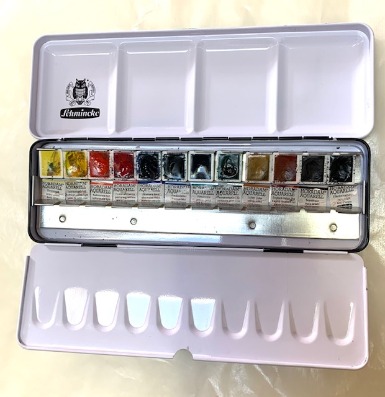
It is a good idea to invest in some good quality paints. Often paintings done with cheaper paints will fade over time as they were not made to be lightfast. Good quality watercolors will retain their strong pigments for decades to come. Also, higher quality paints contain more pigment, meaning that you would not need to use as much color as cheaper paints. Therefore, your paints will last longer over time.
If you are searching for some good watercolors, here’s an overview of the 10 best watercolor painting sets available for both beginner and professional artists.
2. Variety of watercolor brushes

Try to have a good range and variety of watercolor brushes. The size of brush that you use will depend on how large or small of a painting you are working on. Generally, it is good to use smaller brushes for smaller pieces, and larger brushes for larger pieces.
I tend to work with larger brushes (size 10 and up) even when working on smaller pieces, but that is just personal preference. However, it is always a good idea to have smaller brushes on hand for details!
3. Choose good watercolor paper
One of the less thought of but better tips for watercolor painting – is that good watercolor paper is absolutely essential! You must get good heavyweight paper so that your watercolor painting will not buckle from the water.
It is essential that you use actual watercolor paper as it is made to absorb the color. Regular paper will buckle, pill or even tear.
Watercolor painting techniques in application
4. Layer colors

Watercolor is a thin medium. So it is important to build up your piece gradually. However, this can open up some fun opportunities to mix colors on top of each other.
When putting a color down, simply allow it to dry before adding a second layer of color. The color on the lower layer will show through.
For example, look at the image above. The color is green where the blue and yellow colors are overlapping and layered – a testament that layered mixing works!
5. Mix your watercolors

This is a simple but important watercolor tip for beginners. Just like all paints, it is important to mix your watercolors!
If you are using a pan set, make use of the mixing that comes with it. You can also use regular watercolor palettes if you are using watercolor tubes.
When mixing your colors you get much richer color mixtures then you would if you just use the colors straight from the tube.
If you haven’t already, grab my FREE Color Mixing Guide for helpful color mixing instructions and techniques!
6. Dry versus wet paint
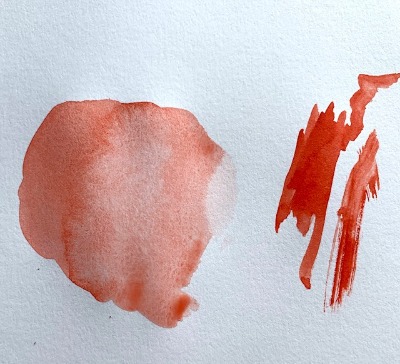
There are two major different ways to work with watercolor – dry and wet. Watercolor is a water based medium and therefore you can control the darkness and saturation level of the colors depending on how much or little water you use.
If you do not use much water and instead have a lot of pigment on your brush, the color will be darker and more saturated. If instead you do the opposite and use more water, the color will be lighter. Over time you will learn how to manipulate and gain more control over watercolor paints.
7. Bleed colors into one another
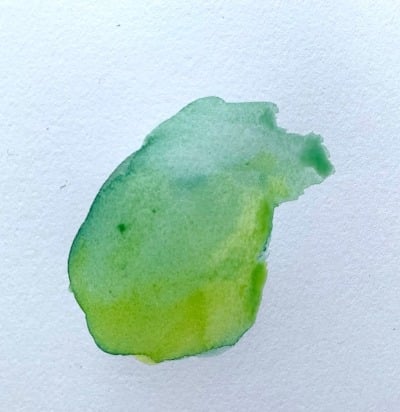
Bleeding colors into one another is one of the many watercolor techniques that makes watercolor paints so beautiful. This is often called the ‘blooming’ technique.
Put down a good amount of color to your paper and while the paint is still wet add in a different color with the same amount of water. Since the colors are still wet you can continue to manipulate the paint however you want to at this point. You can drag the colors into one another more or pull them out further into the paper.
8. Pull in color

If you apply a dry saturated stroke with little water to your watercolor paper you can then pull from that color by just using water. Depending on how much color you put down you could potentially pull out a lot of color by just adding water.
This technique has the ability to show a light source or edge in your piece – a handy technique to remember!
9. Lift color

The color lifting technique is definitely one of the best watercolor tips for beginners! This is especially useful if you feel that you made a mistake and wish to get rid of what you just put down.
To make use of this you need to have a piece of paper towel handy. While your paint is still wet dab at the area you wish to ‘erase’ with your paper towel. The paint should get absorbed by your paper towel. You can see where the paint was lifted in the example image above.
This technique does not always have to be used to erase mistakes. It can also be used to create light lines or simply lighten up a color.
10. Use salt to create texture for fun watercolor painting techniques
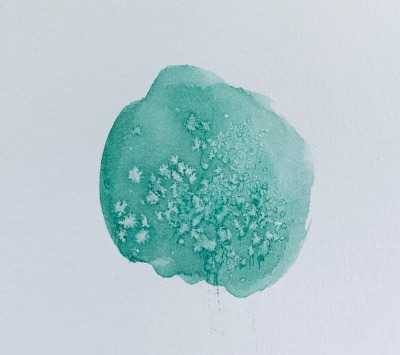
This is perhaps one of the most interesting watercolor tips for beginners. Salt can add some interesting texture to your painting!
While your paint is still wet drip in some salt. Allow the paint to dry before removing the salt by either blowing it off or wiping it away. It can be a fun way to add rain or snow to a landscape, or simply add some fun texture.
11. Use light pencil for underdrawing
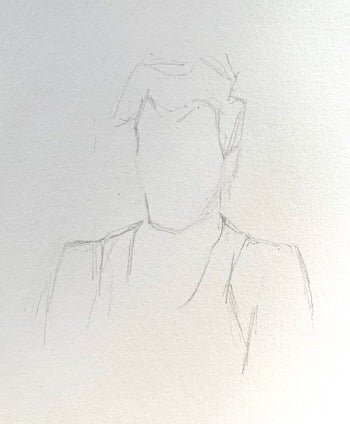
Creating a light pencil drawing is a good way to create a guide for your painting. Use a light pencil such as a 2H artist pencil. It wont bleed into your drawing or show up too much that it is distracting when your painting is complete.

You can barely see the drawing underneath in the completed painting above. I prefer for my drawings to not be very visible as I find it to sometimes be distracting for the rest of the painting. However, you might think otherwise!
Watercolor painting techniques wrap-up
I hope you found these beginner watercolor painting techniques and tips helpful! If you are still shopping for watercolors look at the 10 best watercolor painting sets for beginners and professional artists.
Here is a great watercolor painting tutorial to help you get started painting with!
Let me know in the comments below which watercolor painting techniques are your favorite?
Want to remember this? Save 11 Watercolor Painting Tips to your favorite Pinterest board!

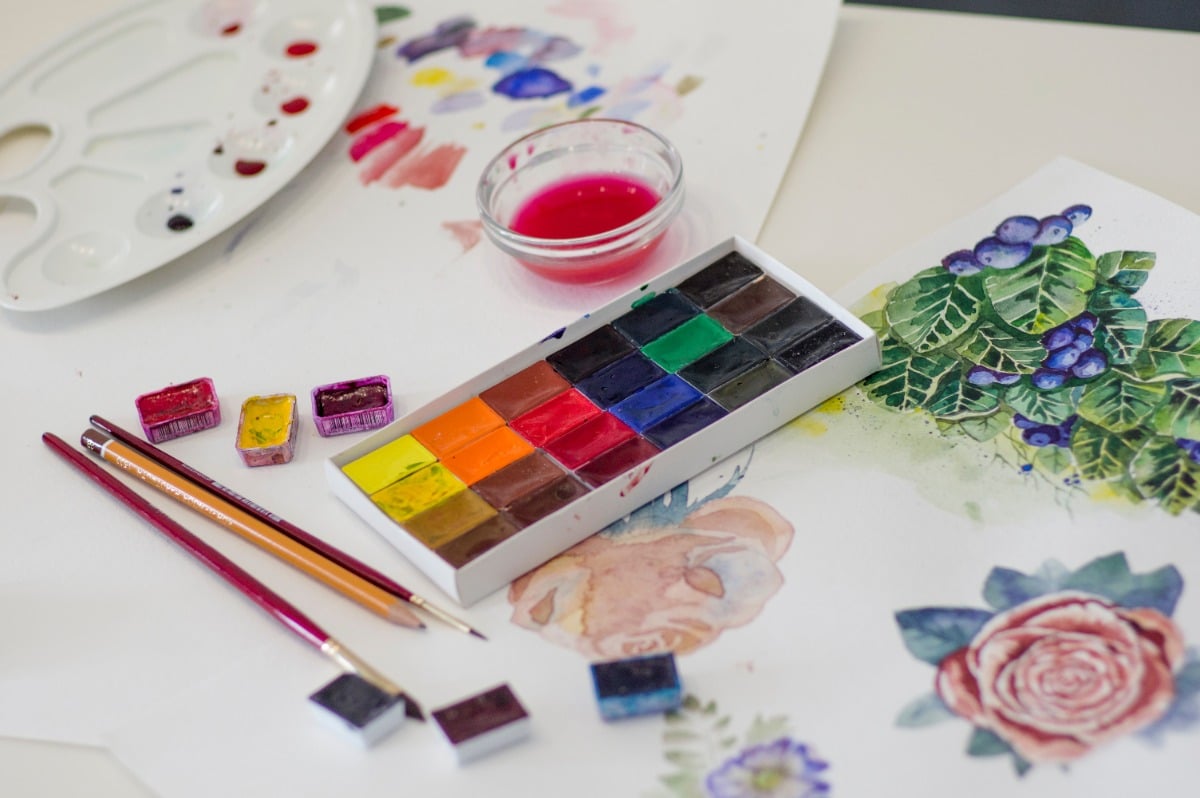


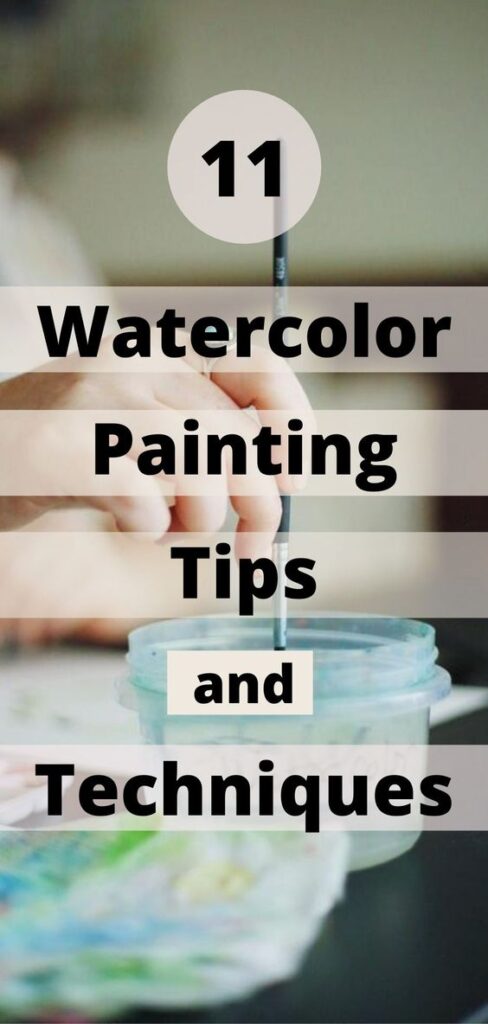


12 thoughts on “11 Beginner Watercolor Painting Techniques & Useful Tips”
Hi, Thank you for this. You have a great site, very informative. I just finished watching part 4 of your intro to Paint with Color Workshop. I found this interesting and feel I can adapt it to the watercolor painting.
I do like drawing and have been drawing for a while now, but felt I would like to go further. I found I tended to like the watercolor painting. Have found a local art group (still nearly an hour drive from my home) where they teach you how to use different medium. Had a couple of lessons, enjoyed them but I did find I get a lot out of your site. Again, thank you. Sue
Hi Sue, I am glad that you enjoyed the 4 part workshop series and that you are getting a lot out of this website. Yes! The information from the workshop can most certainly can be applied to watercolor painting.
Thanks SO MUCH for this. I’m BRAND NEW to painting of any kind so I’m starting with water painting.
You are very welcome Shannon! Glad that you are starting with watercolor painting – its such a great medium!
Found the tips quite interesting and wish to apply them before long. Thank you.
Glad you found these helpful. You are very welcome! 🙂
Hello! I enjoyed your helpful hints! Now I just have to put them on paper! LOL Thank You!
Glad that you have enjoyed the tips here!
אליזבת
תודה רבה מועיל מאוד
בהערכה רבה
רותי כהן
שלום רותי,
אתם מוזמנים מאוד! 🙂 שמחה לשמוע שזה מועיל.
Interesting read and very helpful. Just wish you had it on video.
Glad it was helpful! I plan to do a watercolor video tutorial sometime in the future.